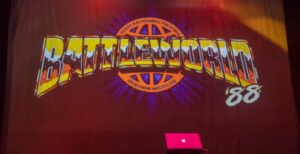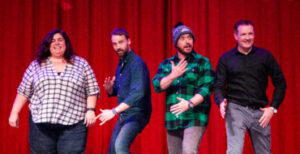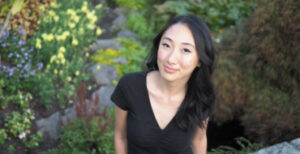To simplify to a borderline traitorous extent, Aristotle argued that a “thing” is more than the sum of its parts; a syllable, for example, is not just the individual letters that make it up, but something else besides. Socrates had called this additional something an eidos, a form, but Aristotle chose to call it “thinghood.”
The question of “thinghood” might well be extended to art. In the best instances of ensemble pieces, the audience finds itself in a swirling vortex of characters, drawing inexorably smaller circles through disparate personalities that surround something hidden until, suddenly, the work is distilled into a single honesty, a moment that is the entirety of the piece and more. In art, “thinghood” is a sucker punch we later realize we deserved. It’s this that My Funny Valentine lacks – which is a shame, because it’s good.
Playwright Dave Deveau’s Valentine is all the right kinds of simple. Tackling an impossibly broad question – what do we do about hate crimes in schools? – Deveau chooses to answer by addressing a second, inextricably related thought: how do we feel about them? The strength of Valentine is in its willingness to explore the variety of reactions to the gay-bias school shooting it centers on without passing quick judgment on any of its character’s perspectives.
If that doesn’t sound simple, keep in mind that every one of the characters is performed by the remarkable Anton Lipovetsky.
An actor, writer, director, and composer, Lipovetsky is guilelessly open for the 85-minute running time of Valentine. His actor’s generosity would be appreciable confined to a single role, but as he moves from character to character, from childish curiosity to grief-driven purpose to detached rationality, we become increasingly indebted to him and to Deveau. The character portraits are so strong in the piece, each as maddeningly inconsistent and gloriously unique as the people in our everyday lives, that we truly feel safe viewing the play’s central issues through the temporary lens of each new character. As a work that speaks out for equality, this is high praise; key for equality is mutual understanding, and Valentine effectively pushes us towards it.
The strongest character in the play is, appropriately, the one with whom we spend the most time. Helen is the over-caffeinated and perhaps under-emotionally-supported principal of the school where the shooting occurs, and her story, the only one the play revisits, is probably the backbone of its tragedy. The irreparable emotional damage that the shooting and its aftermath do to Helen becomes more and more tangible through her five-year battle to create political and social change in the wake of the tragedy. Of all the play’s characters, Helen bleeds most deeply. Her emotional rawness doesn’t wear out its welcome, though; Helen’s excited mix of intellectual enthusiasm and self-effacing honesty combines with her penchant for the non sequitur to create someone truly and humorously endearing. If she does wind up one of the strongest aspects of the play’s tragedy, it’s because we like her the most.
But the play’s strength, again, is in our identification with less immediately likable characters. One of the piece’s standout moments comes in the middle of a fiercely homophobic father’s angry tirade, when he suddenly finds himself fondly describing bonding with his son over video games. It’s here that we enjoy one of the logistical wonders of the one-man show. The smile that spreads over the happy father’s face is a smile shared with other characters, because the smile always belongs to Lipovetsky; at the same time, we feel the deeper truth of human experience, that the smile is the same because the joy of parenthood is shared across all of humanity’s manufactured borders.
So there are disagreeable characters, but not the detestable villains one might find in a Hollywood treatment of the same material. We see each role as another human, and we want to figure them out. But here is where I must return to my original question about the sum of My Funny Valentine’s parts.
There was, for me, no sucker punch to Valentine, no moment of epiphany – no “thinghood.” Perhaps the uncertainty of the piece stems from the uncertainty in the real-life issue that it addresses; with so few concrete, agreed-upon solutions offered in the North American political sphere, it might be surprising to find one on a small stage off East Hastings. But art isn’t so much concerned with a direct answer to political questions as it is concerned with a direct answer to being human.
If the play asks, “How do we feel?” It goes no further in answering than, “This is how others feel.” The play finds a unification of humanity in the smile of a proud father, but its expression of negative emotions remains divided. Maybe the answer to hate and violence is that there is no answer, but art should step forward, resolute, and propose one anyway. For me, Valentine does not. But its characters are well worth meeting all the same.









